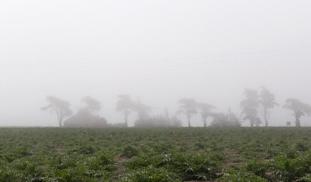319
0
0
Like?
Please wait...
About This Project
Near-toxic levels of mercury were recently discovered in the fur of mountain lions in the mountains of coastal California. Wet deposition of fog water, which is enriched in mercury, was suspected to be the cause. The foggy coast of California is also a major food growing zone, and we hypothesize that mercury in fog poses a risk to its residents through the diet. We propose to make measurements of mercury in crops and animal products from foggy and non-foggy areas.
More Lab Notes From This Project

Browse Other Projects on Experiment
Related Projects
Biomapping of Tree-based Atmospheric Methane Removal (TAMR) for Technological Development
Tree surfaces can be an effective approach for AMR, although foundational information is lacking. Here...
Mercury is in our fog, so what about our food?
Near-toxic levels of mercury were recently discovered in the fur of mountain lions in the mountains of coastal...
Can brown rot and white rot fungi work together to clean up spilled diesel?
Mycoremediation is a form of bioremediation that uses fungi to clean up contaminated sites. Brown rot and...

